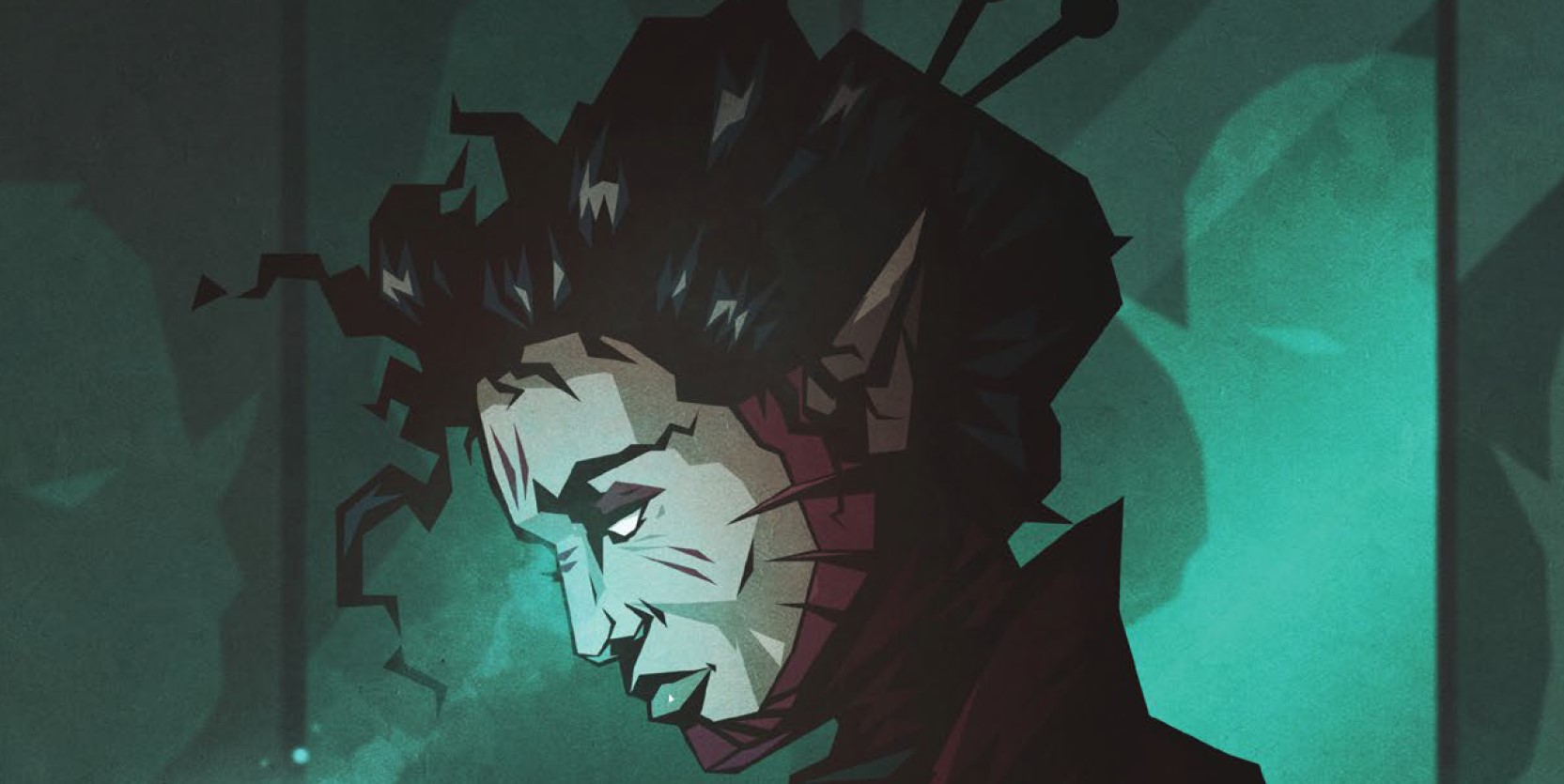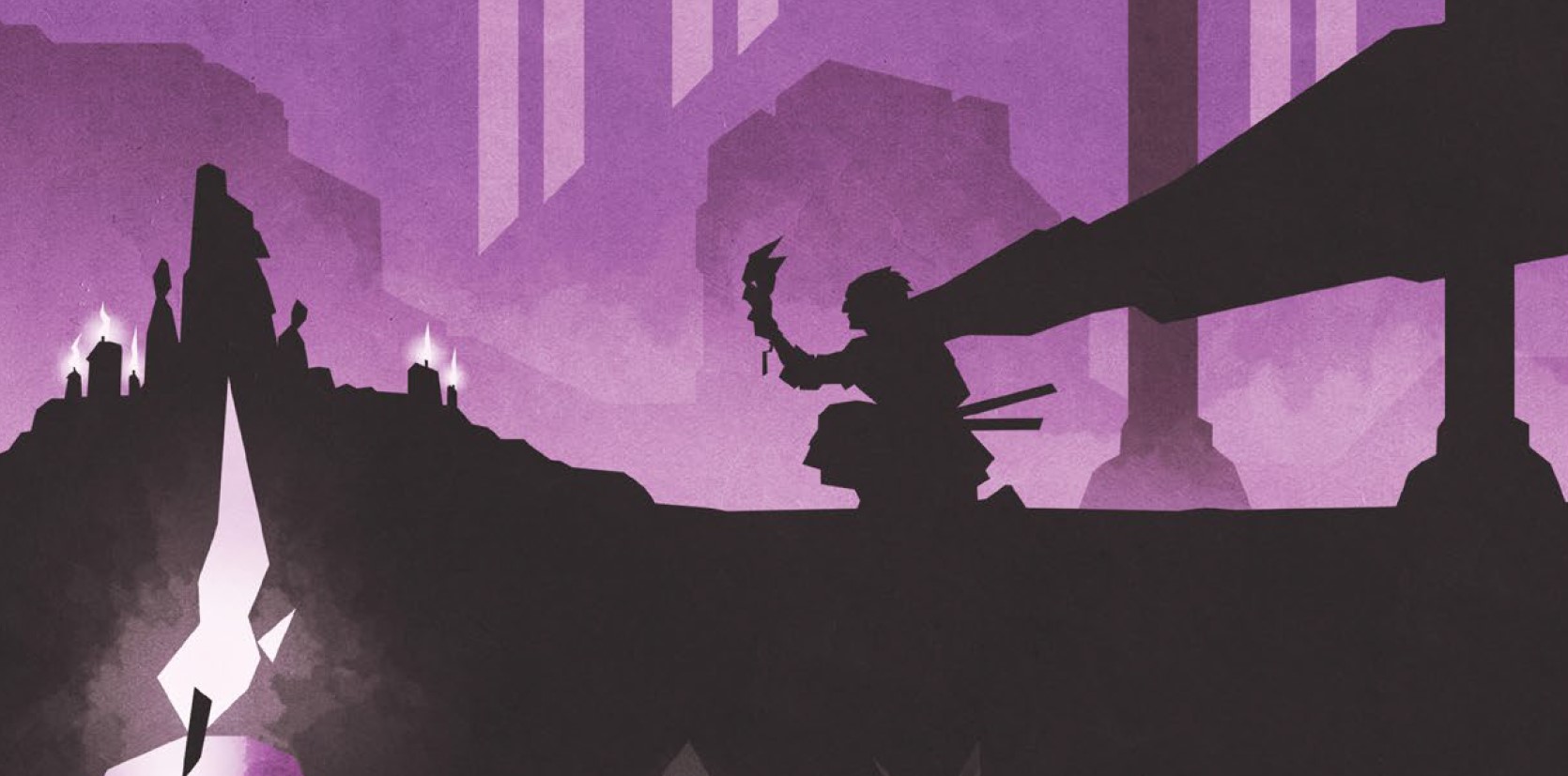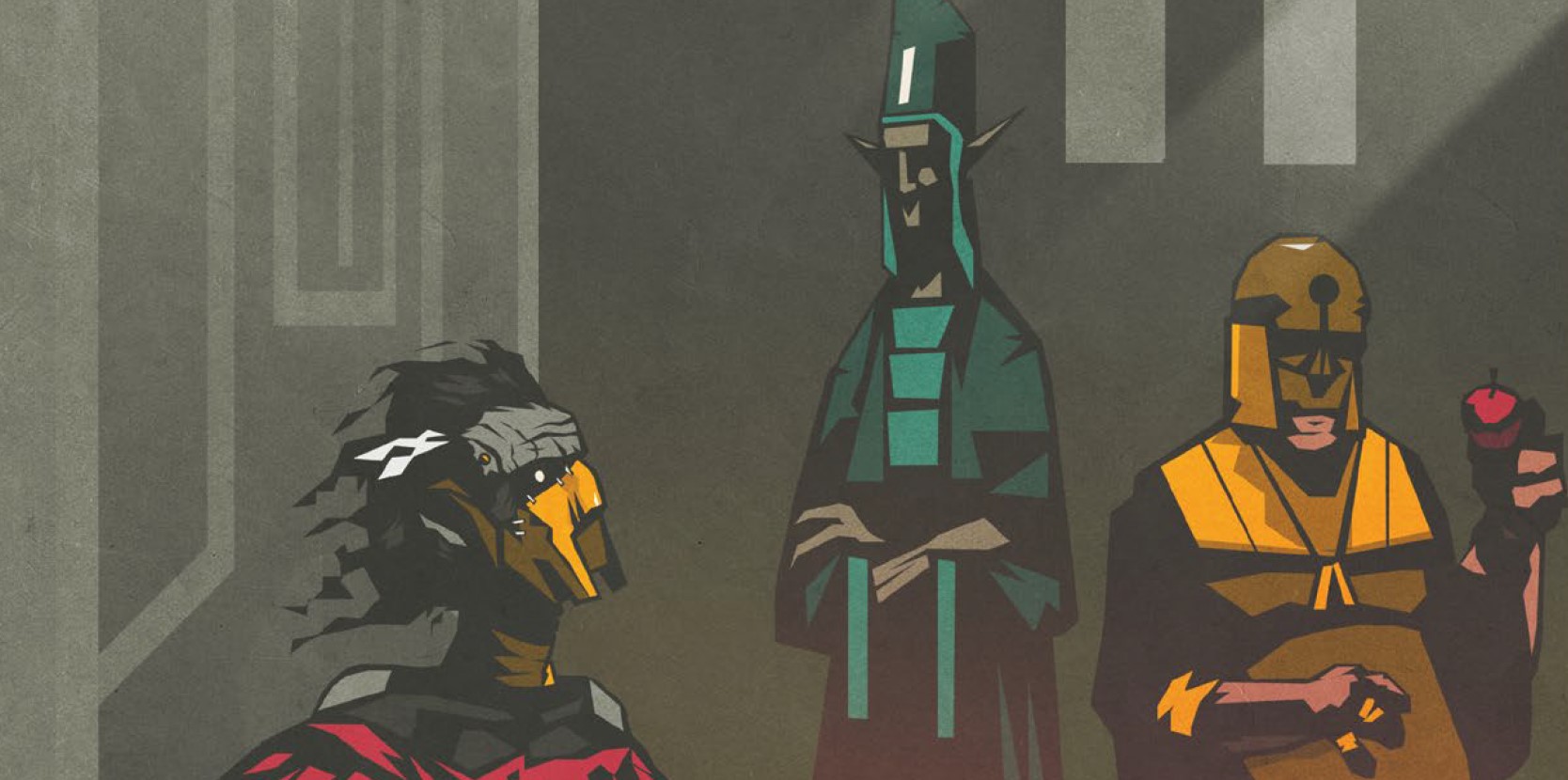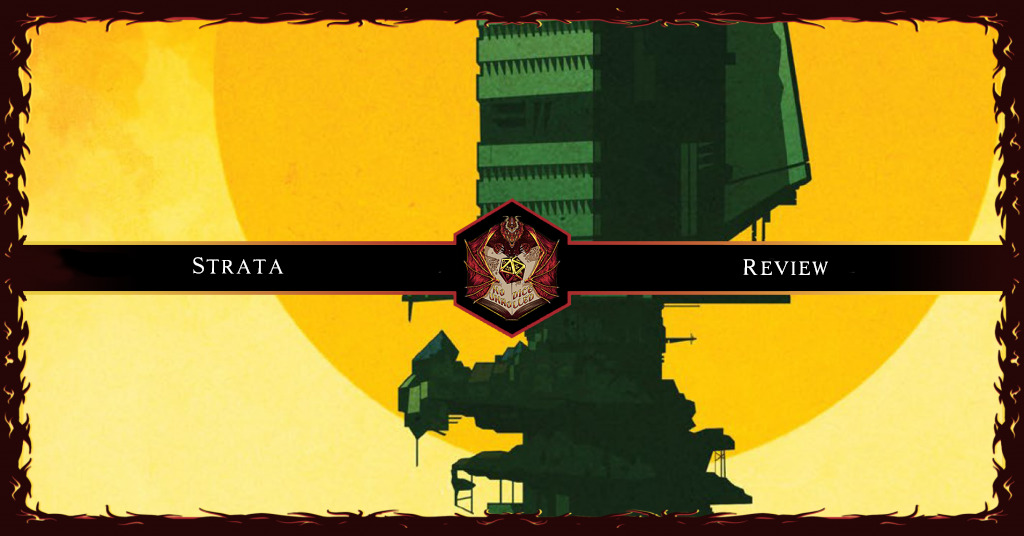This is our review of Strata, the expansion manual for Spire: the City must Fall. First of all, thank you Isola Illyon Edizioni for providing us with a copy of the manual. Isola Illyon is working on the Italian localization of Spire: the City must Fall, the role-playing game originally published by Rowan, Rook and Deckard Ltd.
You can find a copy of the manual on the official store. Strata is available at a cost of £ 30.00 in physical version or £15.00 in digital version.
If you prefer to read up on Spire first: the City must Fall, you can take a look at the our review. We liked it so much that we voted it as the best setting at our 2020 NDU Awards. Kudos to the authors Grant Howitt and Christopher Taylor.

Review of Strata: the Handbook
Strata follows the same editorial style as Spire: The City Must Fall. This means a very clean, almost sober manual. A robust and manageable volume of 241 pages, pleasant to have in your library and above all extremely full of contents. There are no more half-page illustrations: they are replaced by text boxes that deepen elements of the setting.
But this does not mean that the artistic aspect is worsen. Spire is characterized by a unique and recognizable artistic style. Illustrations with clear and strong colors, without shades. Full-page drawings in a style that recalls the works of Mike Mignola, where the goal is not realism. Th sensations aroused are much more important. And it perfectly works. The illustrations are simply amazing. The layout is also very clear, making it very easy to consult.

In the Secrets of Spire
Spire is an impossible city: decrepit, mile-high, wicked and wretched, glorious and profane. Within its crumbling walls, cruel High Elf overlords rule the subjugated Dark Elf race, denying them every freedom.
Not having the task of explaining the mechanics and the setting, Strata can go into the detail of this obscure city. So we can grasp many new aspects inherent in this place inhabited by Aelfir and Drow, to the point of becoming an almost indispensable manual to fully appreciate Spire: the City must Fall. The complexity of the setting is fully enjoyable, acquiring a new three-dimensionality. The core of Spire is made of the controversial choices that lead the Drow to acts of terrorism. And only with Strata we become aware of what degeneration they have to face.
Our reviews are always spoiler-free. Just know that some Aelfir, once they have gained immortality, have their arms removed. This is to show that they do not need them: servitude will provide for their needs forever. In Strata we have a measure of what the Drow have to endure. And only when we can get to justify an act of terrorism, because of such attitudes, we can really get into the spirit of the game.

Content Review of Strata
The manual opens with two new character classes. The Inksmith is an assault journalist. Her abilities are a mixture of social skills and magic; a professional daredevil that alternates between the lounges of the rich side of Spire and its more infamous alleys. Her actions may appear inconsiderate, but she always fulfills his purpose: to channel the zeitgeist of the city into her articles, transforming them into the most powerful of spells.
The Shadow Agent is instead an infiltrator. A classic spy who steals identities, apparently. But she is much more than that. In fact, her abilities go far beyond the camouflage. The deeper she immerses herself in her new identity, the more she empathizes with it. At her final step, the Shadow Agent literally becomes other people. A risky job, but extremely valuable for the Cult and for those who fight for the rights of the Drow.
The manual also contains Extra Advances. Cults, associations, alliances. The dense network of relationships on which the game hinges brings developments that can also be reflected in the character sheet. These Advances are in fact scattered among the various chapters of the manual.. The choices made in game by the characters will allow them to acquire skills related to the factions with which they choose to side. But don’t make the mistake of thinking that this can only benefit you. For every faction you support, there will be at least one other that you will antagonize.

A Plunge into Drowpunk
Drowpunk, in Spire, is an Aelfir counterculture that leads the young offspring of high society to adopt a lifestyle akin to that of their enslaved cousins. And what Strata proposes is then Drowpunk. The manual presents an in-depth study of the areas of the richest and lowest Spire. It then continues with the presentation of ten ready-to-play scenarios.
But what makes each chapter truly precious is the daily experience it reveals. The Aelfir and Drow cultures, together with sporadic elements of human and gnoll origins, outline the colorful habits of the vertical city. Reading Strata allows you to really understand how life is in Spire. Certainly having a description of the most important places, NPCs and faction situations in each district is helpful; but understanding the existence of a Drow in Spire is what gives this manual a unique value.

Review of Strata: the Districts
The section of the manual dedicated to the setting opens with an overview of the luxury districts of Spire. Amaranth, former site of the Drow governments, now completely cannibalized by the Aelfir. The Ivory Row, once a cultural center and now divided between three different contenders. And the Silver Quarter, where money decides the fate of those who own it, but even more of those who have none.
In the lower Spire we find the industrial district of the Works, infested with the toxic plague of lampblack and carbon white. The Garden District, the only source of supply for the city; where the vegetation must be continuously controlled, or it would end up swallowing the whole Spire. And finally the Perch, a precarious shanty town in which powerless and forgotten divinities are worshiped and exploited.
The description of the districts delves into both the NPCs who control them, and the factions that have their interests in the area. However, there are also insights into the Aelfir families and the importance of their culture of masks. And in the paragraphs dedicated to equipment, the gems stand out; they are an ancient Drow technology that is implanted in the body, bringing benefits almost as great as the risks associated with it.

Ten Ready-to-Play Scenarios
The most substantial part of Strata is the one made up of ten scenarios, which take place in the previously described districts. Scenarios, not adventures. In fact, no precise sequences of events are told. The manual outlines factions, relevant characters and critical issues. Key or trigger events are being suggested, of course. But on the one hand, it is up to the master to decide how to use these elements; on the other hand, the players will have complete freedom on how to move. I say “scenarios” because there is nothing predetermined, only an environment in which to move.
Eye of the Beholder is the most disturbing scenario. The characters are asked to introduce themselves to the party of an Aelfir artist and release her masterpieces. These are drow servants undergoing extreme surgery that crystallized their expression to always show the emotion decided by the mistress.
In Home Is Where the Hatred Is, the Cult’s goal is to eliminate Qiliza, an Alefir matriarch who harshly rules the entire family, to the point of keeping everyone under blackmail. The treatment for the Drow servants can be easily imagined.
Bisquiet offers one of the most controversial scenarios. The characters are in fact sent to verify the loyalty of the owners of a particular place. Loyal to the Cult, they have infiltrated the Aelfir society so well that the other Drows begins to question their loyalty. To what extent are those who have earned better living conditions still willing to get involved in the fight?

Review of Strata: A Descent into Aelfir’s Madness
In The Fall of Glasshelm, the fantasy-punk traits of Spire are taken to the extreme. The characters find themselves fighting against Glasshelm, precisely. A real estate company that seeks to carry out a real work of gentrification. Obviously with methods that are anything but clear.
Better the Devil offers a variation on the theme of fighting the Aelfir. In fact, what’s worse than having to face a ruthless opponent? Fighting a ruthless opponent that belongs to your own people.
The Forgotten is the most touching scenario in the entire manual. It deals with the theme of disability, which unites the characters in the defense of the only refuge that in the very poor Pilgrims’ Quarter offers hospitality to those in difficulty. A theme so universal that it even surpasses the very strong racial differences of Spire: it is the only scenario in which it is possible to play a human or an Aelfir.
In Ironshrike the characters have the task of destroying the district that brings the same name. This area of Spire is a deputy to commerce brought to paroxysm, to the point of becoming a parody of an unbridled social Darwinism. The Aelfir use this market to publicly introduce anything that could further destabilize the Drow society. And the cult wants to put an end to this practice.

Mature Contents
Sulphurus Presses introduces a management aspect to the game. The cult’s goal, through the characters, is to create a newspaper that supports their cause. And in the meantime damage the Aelfir propaganda newspapers too. The regular alliance system Spire is expanded, creating an interesting,even if cumbersome, journal creation and management mechanic. So the most important newspapers in Spire are shown too.
Lines in the Dirt is the scenario in which the characters have the most to lose. The Aelfir maneuvers in fact directly affect the community in which they live. And although it is in Derelictus, the poorest district in Spire, it is still their community. This scenario is particularly centered on the human relationships of the characters.
The final scenario in the manual is Dark Harvest. The plot takes place in the Garden, for once away from the oppressive urban environment of Spire. But even here, the characters will face the oppression of one faction and the fundamentalism of another one.
As you can guess, these scenarios all deal with very mature themes. Mutilation, abuse, disability, alcoholism, slavery; and this is just to name a few. The authors are various, and each one has given her scenario the editing that she found most suitable. But they all specify which are the themes that will be touched in the course of the game. They are all extremely interesting and delicate. A discussion between players is always crucial when approaching a game like Spire: the City Must Fall.

Conclusions of the Review of Strata
Spire: the City Must Fall is one of the best games produced in recent years. Whoever writes this review learned to love it. And Strata is a very precious manual for Spire, to the point of being almost indispensable. The in-depth study on the themes developed or mentioned in the basic manual is priceless. And so is the attention to readers; at the end of the manual, some Kickstarter backers were rewarded with the publication of a cult created by them.
As you understand from this review, Strata is a top product. It is often a punch in the stomach (in a good way); it manages to create genuinely disturbing sensations. If Spire isn’t a game for everyone, Strata even more. It could be said that it is a manual not suitable for susceptible people, but it wouldn’t be true. The gaming experience is so intense and extreme that you have to have the desire to actively recreate certain scenarios. Victory will almost always be denied, and almost always bitter. But Strata will make you dig deep inside yourself that you will know some aspects of you that you didn’t know to have.

